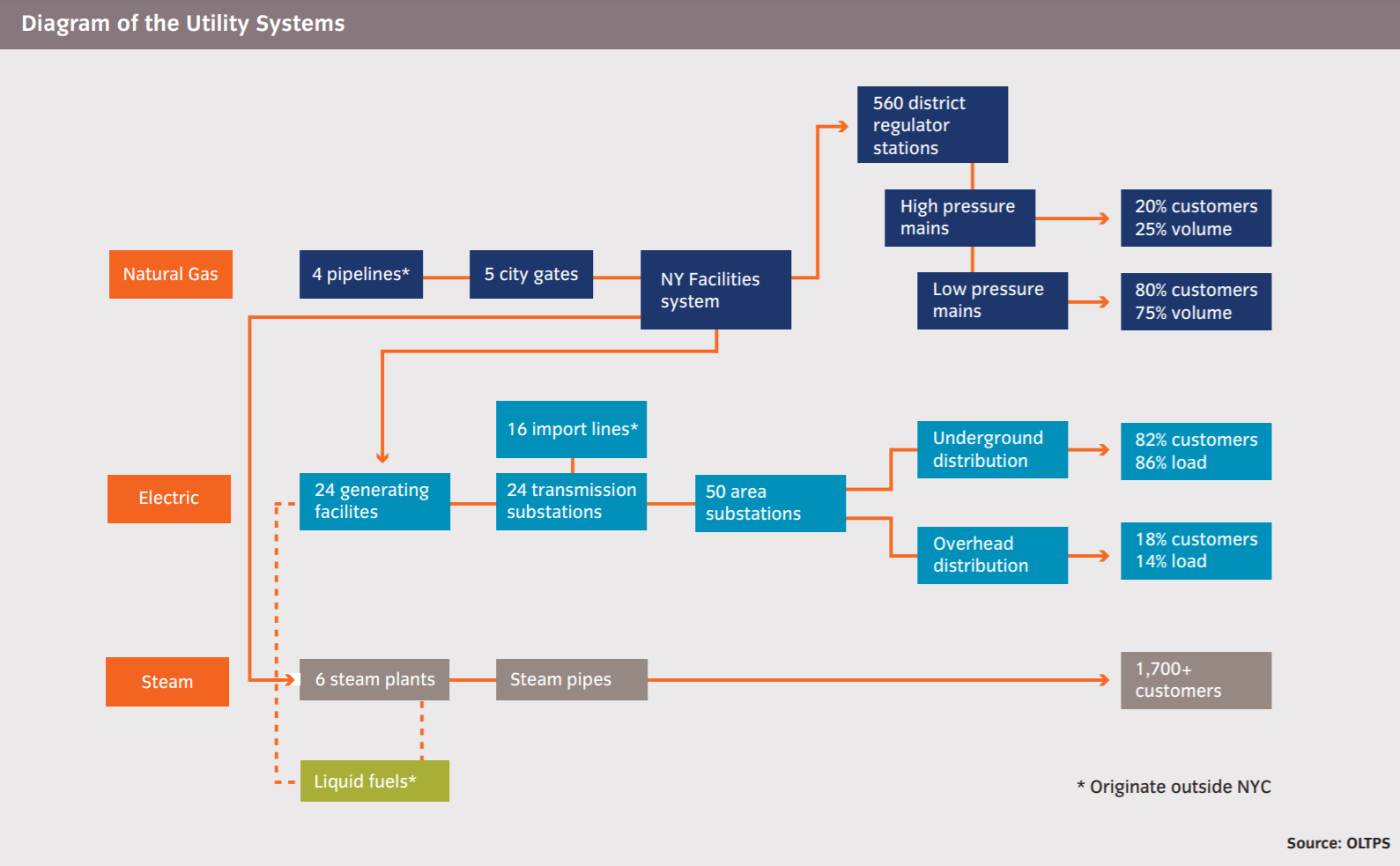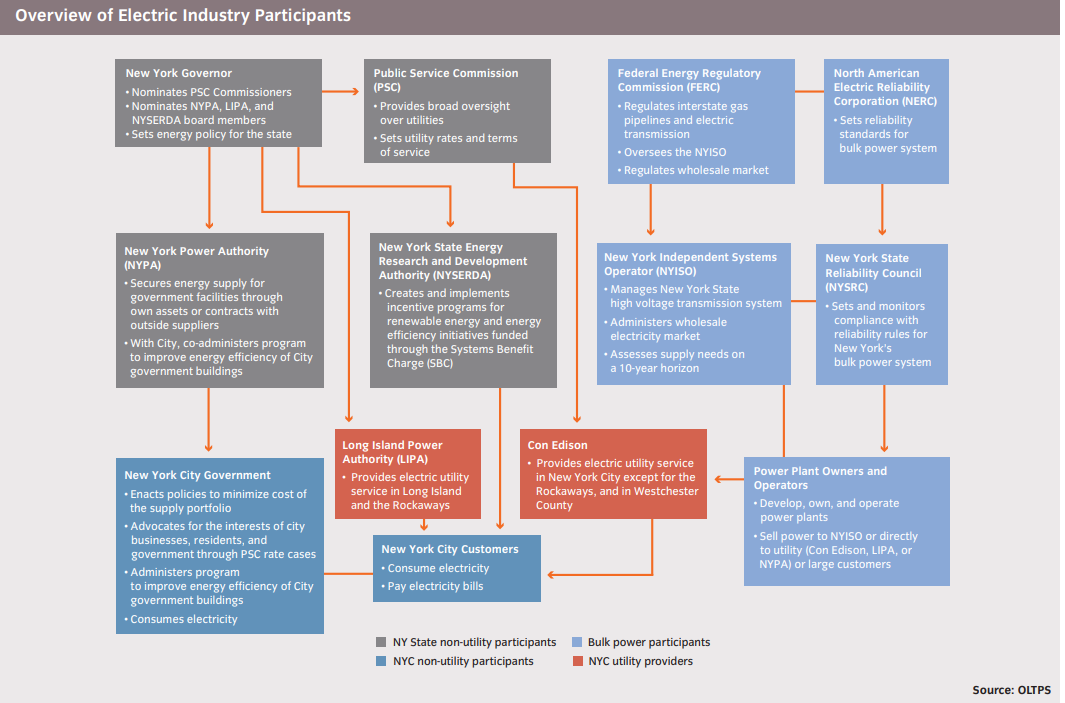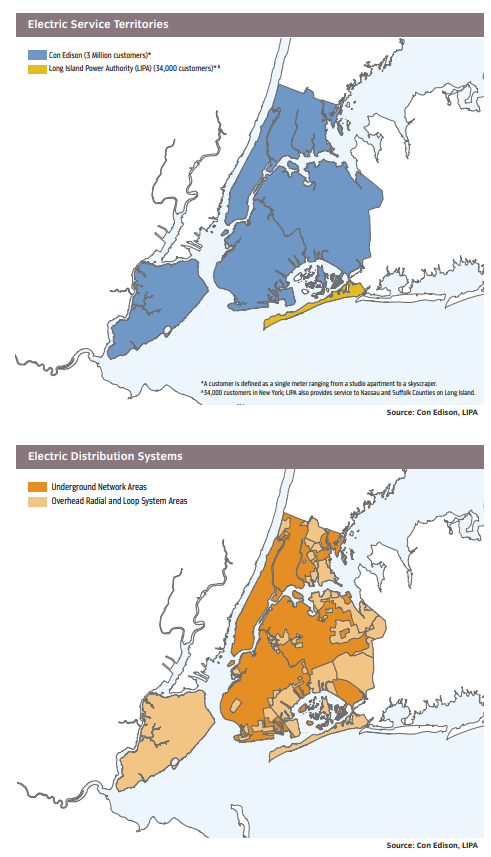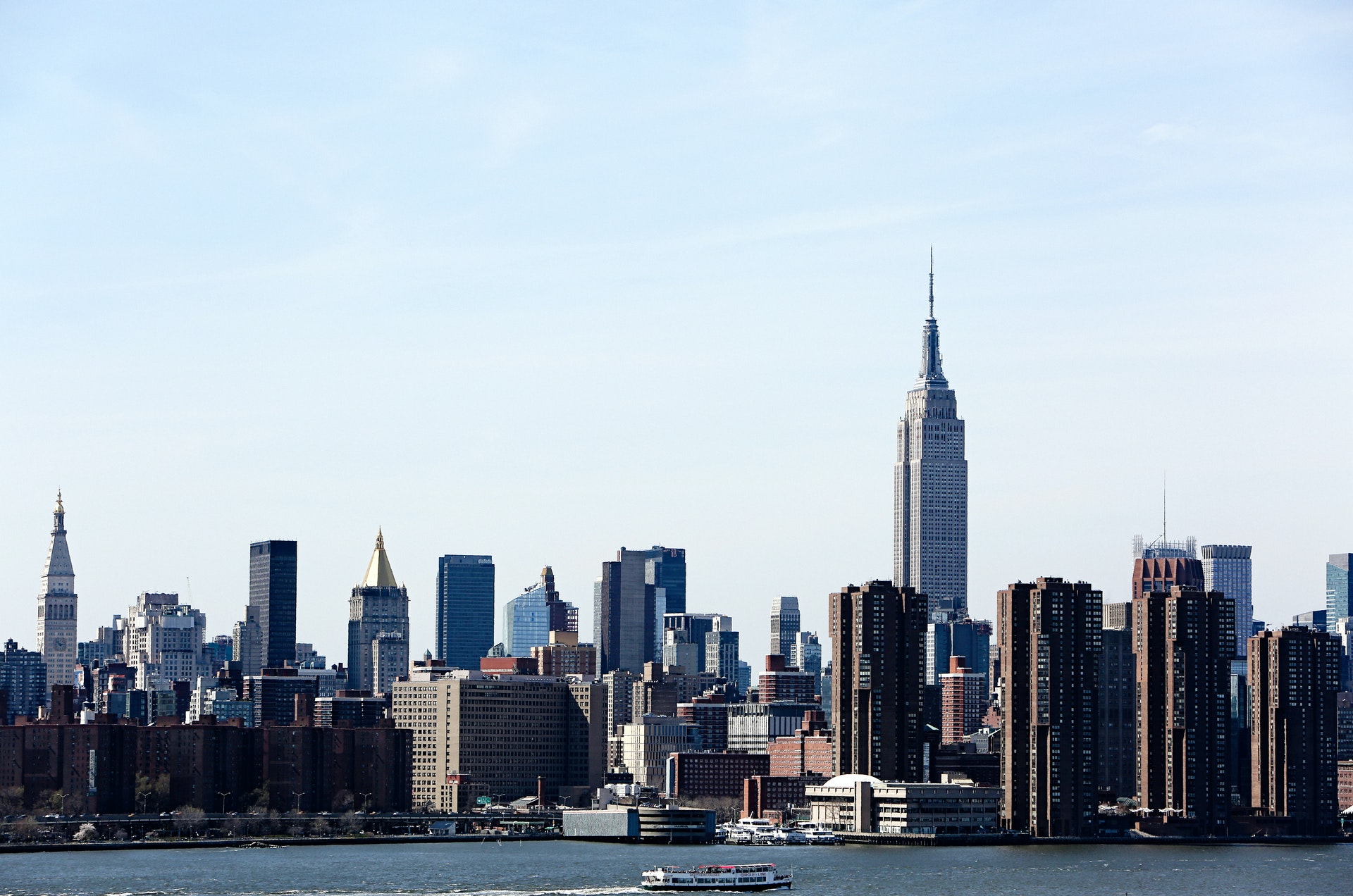Annually, New Yorkers spend roughly $19 billion on energy to power, heat, and cool NYC. The city is powered through a system of interdependent electric, natural gas, and steam networks. Although New York’s power networks are some of the oldest in the United States, they remain extremely reliable overall. The diagram below, from nyc.gov, shows the various components which make up the New York City utility systems.
How the New York Electric System Works
Way back in the 1880s, Thomas Edison developed the world’s first centralized electric generation and distribution system in New York City. Today, this electric system has grown to a huge scale, as evidenced by the numbers below.
- The system serves 3 million customers, including:
- 8.3 million people
- 250,000 businesses
- These customers consume roughly 1.4% of all electricity produced in the United States.
- During summer, the grid handles peak loads of over 11,000 MW.
- This is twice the load of Los Angeles, the next largest city.
The 3 main components of the New York City electric system are:
- Generation: The production of electricity.
- Transmission: The transportation of high voltage electricity to large substations.
- Distribution: The carrying of electricity from large substations to smaller ones and, ultimately, to customers across NYC.
The wide array of private and public entities which comprise the New York electric system are outlined in the chart below, courtesy of nyc.gov.
Generation
A number of private companies and public authorities operate the electricity generation fleet within New York City. These numbers can be broken down as follows:
- There are 24 plants within/directly connected to New York City (known as the ‘in-city fleet’).
- These plants generate up to 9,600 MW, accounting for more than 80% of NYC’s peak demand.
- Roughly 50% of NYC’s energy needs are met by cheaper electricity imported from Upstate New York and New Jersey.
- NYC’s peak electricity usage hit a record high of over 11,500 MW in July 2011 as a result of a heatwave which brought temperatures above 100 degrees Fahrenheit for 3 consecutive days.
These figures show the huge demand for electricity in New York City, but what are the energy generation sources? And where are the power plants located?
The in-city fleet is largely reliant on natural gas, though many plants are also capable of burning fuel oil. All of these in-city plants are located along the waterfront, predominantly in Astoria and Long Island City. Additionally, nearly two-thirds of the in-city fleet is over forty years old. This is bad news for the environment, as the dated technology in these plants, coupled with their use of non-renewable resources, leads to lower energy efficiency and higher harmful emissions relative to newer plants.
However, there is positive news in terms of carbon footprint and renewable energy sources. Customer-sited distributed generation (DG) is a growing source of electricity for New York City. There is 160 MW of distributed generation in NYC, and many smaller DG sites use renewable energy sources like solar panels. Moving forward, further implementation of renewables like solar will be necessary to meet New York climate targets and reduce the overall carbon footprint of the city.
Transmission
NYC receives 6,000 MW of electricity from a wide range of areas including:
- Northern New Jersey
- Long Island
- Hudson Valley
- Northern New York State
- Western New York State
This high voltage electricity is routed through large Con Edison substations, each of which may support hundreds of thousands of customers in the city. The New York Independent System Operator (NYISO) coordinates electricity flow on the transmission system across the state, while Con Edison operates its own transmission facilities in the city.
Distribution
In terms of distribution, Con Edison is the primary electric utility for all five boroughs of New York City. The distribution systems used to serve NYC customers consist of feeder lines originating from area substations. Area substations are smaller than the transmission substations noted in the ‘Transmission’ section above. These area substations serve one or two load areas, each numbering tens of thousands of customers.
Customers receive electricity to their homes and businesses via a series of overhead and underground systems which comprise the Con Edison electrical distribution system.
The graphic below shows both electric service territories and electric distribution systems for New York City. Again, the image is courtesy of nyc.gov.
To read the full nyc.gov report on New York City utilities and the NYC electric system, click this link.
To go solar in New York and save on your utility bill, contact YSG Solar today. Send us an email, or call at 212.389.9215 and we will identify the ideal solar project for your energy needs—residential, commercial, or community. You can also ask us about energy storage, a way to safeguard against future power outages and weather disturbances.
YSG Solar is a project development vehicle responsible for commoditizing energy infrastructure projects. We work with long-term owners and operators to provide clean energy assets with stable, predictable cash flows. YSG's market focus is distributed generation and utility-scale projects located within North America.
Sources:
All images & information in this blog post are courtesy of this report from nyc.gov.
https://www.nyc.gov/html/sirr/downloads/pdf/final_report/Ch_6_Utilities_FINAL_singles.pdf
Photo by Life Of Pix from Pexels.

